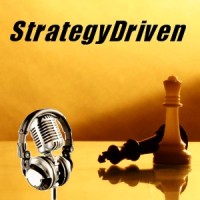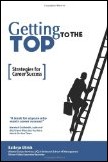Leadership Inspirations – Recovery

Confucius (551 – 479 BC)
Chinese thinker and social philosopher

Confucius (551 – 479 BC)
Chinese thinker and social philosopher
In Part Two – Segment Two will complete the discussion on a trusting organization. These 10 principles of trust when employed consistently to your entire organization without bias will build a bridge of loyalty that will stand against the elements. People do not willingly leave organizations built on moorings as strong as trust.
This article will examine the last five Building Blocks of Trust. All of the building blocks are important and it is essential to note that you cannot selectively skip one in favor of another. Companies that score high in the Trust Index will see lower turnover and greater productivity.
Figure 1: The Second Five Building Blocks of Trust
Hi there! This article is available for free. Login or register as a StrategyDriven Personal Business Advisor Self-Guided Client by:
Subscribing to the Self Guided Program - It's Free!
About the Author

(Course Technology PTR, Cengage Learning 2010). During his 36 year career, Frank has worked with many of the most recognized companies and executives in the world. He has provided consulting services for peers across the country and helped initiate Junior Achievement programs in Ireland, the Ivory Coast, Oman, the United Arab Emirates, Bahrain, and Uzbekistan. Frank was inducted into the Delaware Business Leaders Hall of Fame in October 2008, one of 38 individuals so honored and the first not-for-profit executive to receive this distinction in Delaware’s 300 year business history. To read Frank’s complete biography, click here.
For more information regarding this subject, visit Frank McIntosh at his website www.FJMcIntosh.com.
In good times and bad, organizations have learned about the impact of thinking that employees are dispensable. Such thought is particularly unwise as the economy improves after a downturn.
During the past few years, companies have lopped off employees in the hundreds of thousands for reasons of economic survival. The staff gaps that resulted are now being felt as those same companies are faced with competition both for business and the top talent they still possess.
Slowly, we are seeing a shift from a buyer’s to a seller’s labor market. There may be a high unemployment problem but HR executives are still complaining about a significant skill gap, that is, a difference in proficiency between the majority of individuals in the market for jobs and those that companies want in their labor force.
Rather than having just a replacement mentality, human resources needs a more strategic approach to the situation—one that finds answers to the coming high turnover. They need a solution that also addresses the bad reputation that the recession has wrought on many companies and that identifies cultural changes that will attract new employees.
Evidence has shown a high correlation between employee job satisfaction and engagement and employee retention and recruitment.
Here are some strategies to engage and retain top talent:
Hi there! This article is available for free. Login or register as a StrategyDriven Personal Business Advisor Self-Guided Client by:
Subscribing to the Self Guided Program - It's Free!
About the Author

, The Manager’s Question and Answer Book
and The Essential New Manager’s Kit
.
To learn more about the American Management Association, click here.

Special Edition 49 – An Interview with Kathryn Ullrich, author of Getting to the Top explores the approaches everyone in the corporate world can use, regardless of their current position, to shape their career development and accelerate their advancement. During our discussion, Kathryn Ullrich, author of Getting to the Top: Strategies for Career Success, shares with us her insights and illustrative examples regarding:

Additional Information
In addition to the incredible insights Kathryn shares in Getting to the Top and this special edition podcast are the resources accessible from her website, www.GettingToTheTop.com. Kathryn’s book, Getting to the Top
, can be purchased by clicking here
.
Final Request…
The strength of our community grows with the additional insights brought by our expanding member base. Please consider rating us on iTunes by clicking here. Rating the StrategyDriven Podcast and providing your comments online improves our ranking and helps us attract new listeners which, in turn, helps us grow our community.
Thank you again for listening to the StrategyDriven Podcast!
About the Author

, heads Kathryn Ullrich Associates, a Silicon Valley executive search firm, and Alumni Career Services for UCLA’s Anderson School of Management. Kathryn also leads the Getting to the Top career development programs at the Stanford Graduate School of Business and the UCLA Anderson School of Management. Through these career programs, over 1,500 attendees have learned the career paths and skills to be successful in different functional areas including marketing, product management, public relations and corporate communications, strategic alliances and channels, sales, business development, consulting, private equity, corporate operations, and general and executive management. To read Kathryn’s complete biography, click here.
Podcast: Play in new window | Download (Duration: 30:51 — 42.4MB)
Subscribe: RSS
Patience is a virtue. This pearl of wisdom has been a bone in the throat of even the most patient leader. Patience is an easy thing to talk about, but it is extremely difficult to practice. Webster’s defines patience as, “the quality of being capable of bearing affliction calmly.” Patience is the third attribute Rudyard Kipling described in the poem ‘If-:’
Hi there! This article is available for free. Login or register as a StrategyDriven Personal Business Advisor Self-Guided Client by:
Subscribing to the Self Guided Program - It's Free!
About the Author

